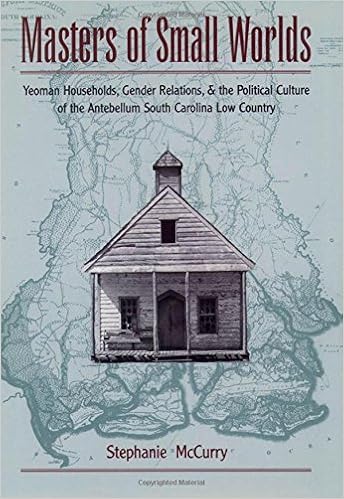
McCurry fundamentally explores power relationships between antebellum South Carolina yeoman farmers and their large planter neighbors as they went about their private and public lives within relative proximity of each other. While the planter class represented the political elite in the antebellum south, they could not function without the support of the lower class of small farmers, however much they viewed the lower class as inferior nuisances. This relationship plays out, McCurry argues, in the ways that yeoman farmers, as white landowners in the black belt of the south, asserted their social equality with plantation owners. Not only does McCurry explore the power relationships between these two classes, but she also discusses the power dynamics within these households, particular in terms of gender and race relations. One of the most significant additions McCurry makes to the historiography of the antebellum south and Civil War era is that she explains why poor whites went to fight for the Confederacy; simply, the racialized system they lived in helped yeoman farmers maintain their status as masters. While they were not masters over much, they still were a class above the black majority in South Carolina.
One of the underlying themes throughout McCurry’s book is the issue of individual property rights and community land claims in shaping these power relationships. Fences became integral to formally shaping individual properties, and McCurry states that men became masters of these fenced in worlds, and in particular, the people within them, women and slaves included. Understandably, the wealthier elites bought the most fertile, and therefore, most valuable lands; some yeoman farmers owned more property, but their property was typically made up of sand and swamplands that required much expensive maintenance to make into usable land. In these small farming households, both children and women worked the land, even alongside what few slaves they might have had. This distinguished, among other things, yeoman wives and their planter superiors; elite women did not physically work, but rather ran their households of many servants and slaves. Furthermore, both masters and mistresses of plantations attempted to establish patron-client relationships with the yeoman classes in various ways, but that ultimately failed because the small farmers believed themselves to be equals through their identities as masters over their own properties.
McCurry explains that the South Carolina Low Country remained very patriarchal; her discussion of southern churches explains in depth the interplay of both class and gender. The classes were integrated in this small community churches, kept in place by systems of pew-renting that meant planters got the best seats inside the church buildings. Many of the freedoms that were experienced even by the wealthiest of planter mistresses were kept in check by the yeoman class of men in their communities. While Brekus had briefly discussed the difficulty faced by women who wanted to be preachers in the south during this period, McCurry fleshes this argument out in full. She states that even elite planter women wishing to demonstrate charity needed to go through church elders who then designated where that charity would be allotted. The southern patriarchal system was also demonstrated through church discipline, McCurry argues; punishments almost always fell harder on women than men in many cases for similar offenses, and even southern Christianity argued for the validity of the slave system. Thus, she demonstrates the strong tie between church and politics in the south.
Fascinating post! I especially like the connection you make to Brekus, and the real limitations southern churches placed on women (which were, as McCurry shows, essential to the southern social order).I’m surprised you didn’t talk about gender more. Is it a power relationship? How does McCurry define it, and how was it essential to yeomen farmers’ equality with men of the planter class?
LikeLike